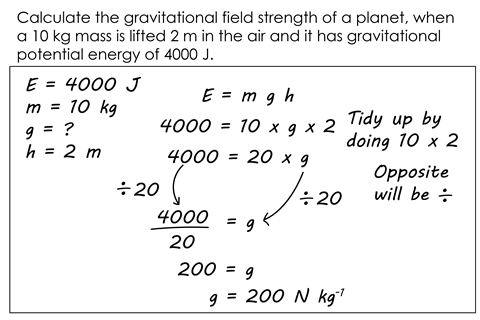Science teacher David Wait wishes formula triangles would have a Bermuda Triangle moment and disappear
Formula triangles entered the education scene several years ago, as a cheat code for easily rearranging equations. The idea is to input simple three-variable equations into a triangle, cover up the missing variable and the triangle reveals the rearranged equation – using multiplication or division. Back when I was a newly qualified teacher every lesson had formula triangles, but now I’m questioning how beneficial they really are to students.
Is there a point to formula triangles?
There are a few articles out there discussing the pros and cons of using formula triangles. Stephen Cavadino of Cavmaths takes a more conservative approach to using them to support their teaching of algebra. I take a much firmer stance, in which they should only be used to gain some simple marks for the lowest-attaining students.
What’s the point?
There are a few articles out there discussing the pros and cons of using formula triangles. Stephen Cavadino of Cavmaths takes a more conservative approach to using them to support their teaching of algebra. I take a much firmer stance, in which they should only be used to gain some simple marks for the lowest-attaining students.
My argument against them is, for students to effectively use the triangles in a GCSE science exam, they need to be able to build the equation triangle from the formula. This isn’t too bad while we still have the full formula sheets for our Covid years, but if (and hopefully not) we return to the short equation sheets, learners will have to remember the triangles.
This is one cheat code I wouldn’t use
We then have the problem in physics where we have four variable relationships and more complex ones other than direct proportionality. For example, the specific heat capacity equation (Eh = mcΔT) and the kinetic energy equation (Ek = ½mv2 ). Now, the formula triangles suddenly fall flat on their faces. Teaching by this method limits what students can reasonably access in questions.
Reasons to rearrange
With a combined strategy from the mathematics and science departments, we can work on confidently rearranging formulas so that the majority of students can access all of the calculation questions. The added bonus of teaching how to rearrange equations algebraically is that it gives students a better understanding of the relationship between the variables and helps to apply context to our, sometimes, abstract concepts.
The approach I use to rearrange is to move variables to one side of the equation until the unknown value is the subject of the equation. I do the opposite function so that it cancels out – opposite side, opposite sign. For four variable equations, I would encourage the students to tidy it up as best they can and then rearrange.
Rearranging like this keeps the mathematics purer. It’s transferable between maths and science and allows us to teach the relationships between variables with greater ease.
The approach I use to rearrange is to move variables to one side of the equation until the unknown value is the subject of the equation. I do the opposite function so that it cancels out – opposite side, opposite sign (rsc.li/4eZ02Dd). For four variable equations, I would encourage the students to tidy it up as best they can and then rearrange (rsc.li/3W7zMz3).
Rearranging like this keeps the mathematics purer. It’s transferable between maths and science and allows us to teach the relationships between variables with greater ease.
The only time I would consider teaching formula triangles would be for students with lower prior attainment, students that have to pause and think about the answer to 2 × 20. Students who would otherwise be unable to access any calculation questions. At least this could provide them with some marks, leading to higher attainment overall, because they can attempt questions that otherwise they would have left blank.
But for the vast majority of students, this is one cheat code I wouldn’t use.
David Wait







![Formula triangle alt 300tb[1]](https://d1ymz67w5raq8g.cloudfront.net/Pictures/100x67/5/6/8/113568_formulatriangle_alt_300tb1.jpg)





3 readers' comments